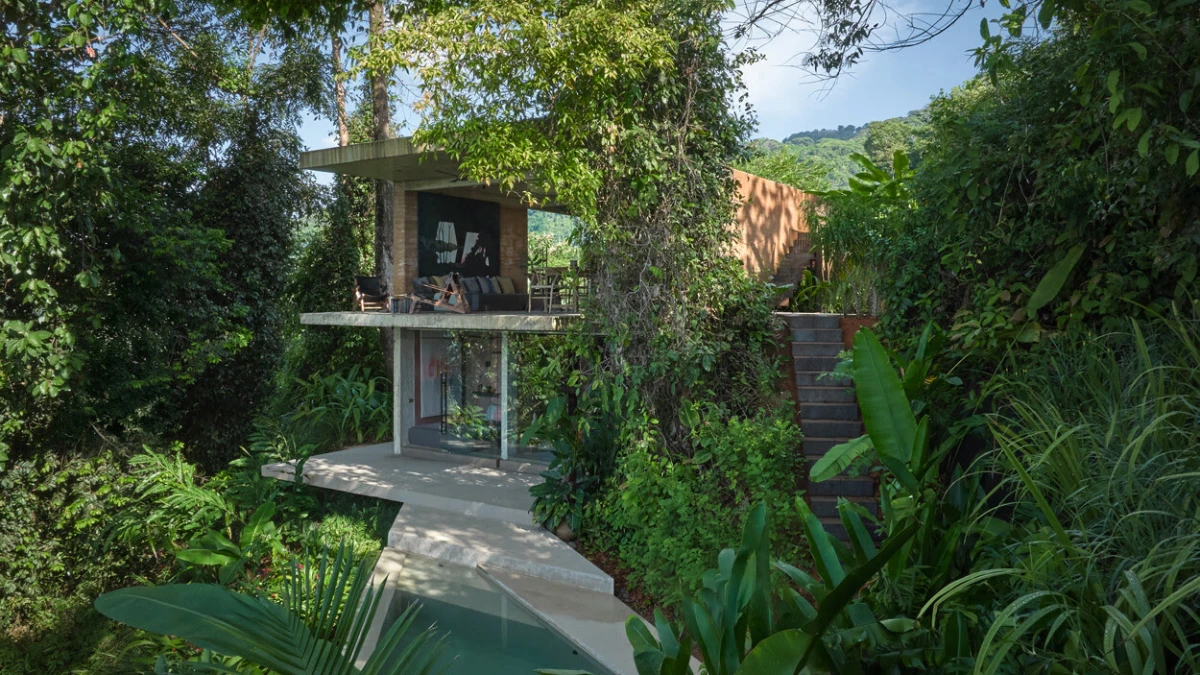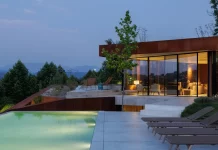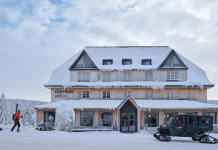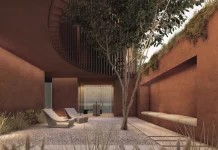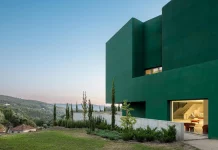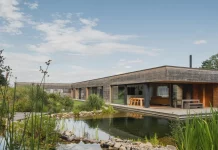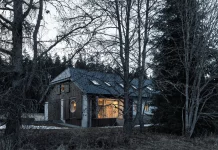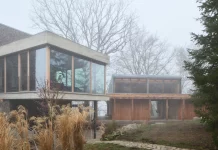Architecture as a Living Experience
Few homes capture the essence of coexistence between human design and raw landscape as gracefully as the Costa Rican Studio House. Designed by architect Dagmar Štěpánová of Formafatal, this residence redefines what it means to live with nature, not just beside it.
Perched above the Pacific in Playa Hermosa, Uvita, the Costa Rican studio house is both a personal retreat and an architectural statement. It invites its inhabitants to step beyond the ordinary and to experience daily life as a continuous dialogue with the forest, light, and ocean air. Every space in the home embodies this idea of presence—of seeing, hearing, and feeling the landscape unfold.
This project is more than a shelter; it is a manifesto for authentic, site-sensitive architecture.
Symbiosis of Architecture and Place
The sloped terrain of the site was not merely a constraint—it became the project’s creative catalyst. The plot falls in two directions, forcing the design to adapt fluidly to its natural contours. Rather than impose a rigid structure, Štěpánová chose to let the land lead.
This decision resulted in a form that breathes with the hillside. The Costa Rican studio house flows around mature trees, preserving their roots and turning vegetation into an integral architectural element. This organic relationship ensures the building doesn’t dominate its surroundings—it grows from them.
Inside the main living area, an entire façade is absent. Instead, a living panorama unfolds. The jungle, sky, and ocean merge through the open space, constantly shifting with the light and sound of the day. Here, the boundary between inside and outside disappears. One doesn’t merely look at nature; one becomes part of it.
This immersive quality transforms daily moments—sunrise coffee, evening rain, or moonlit silence—into sensory events that root the inhabitants in their place on earth.
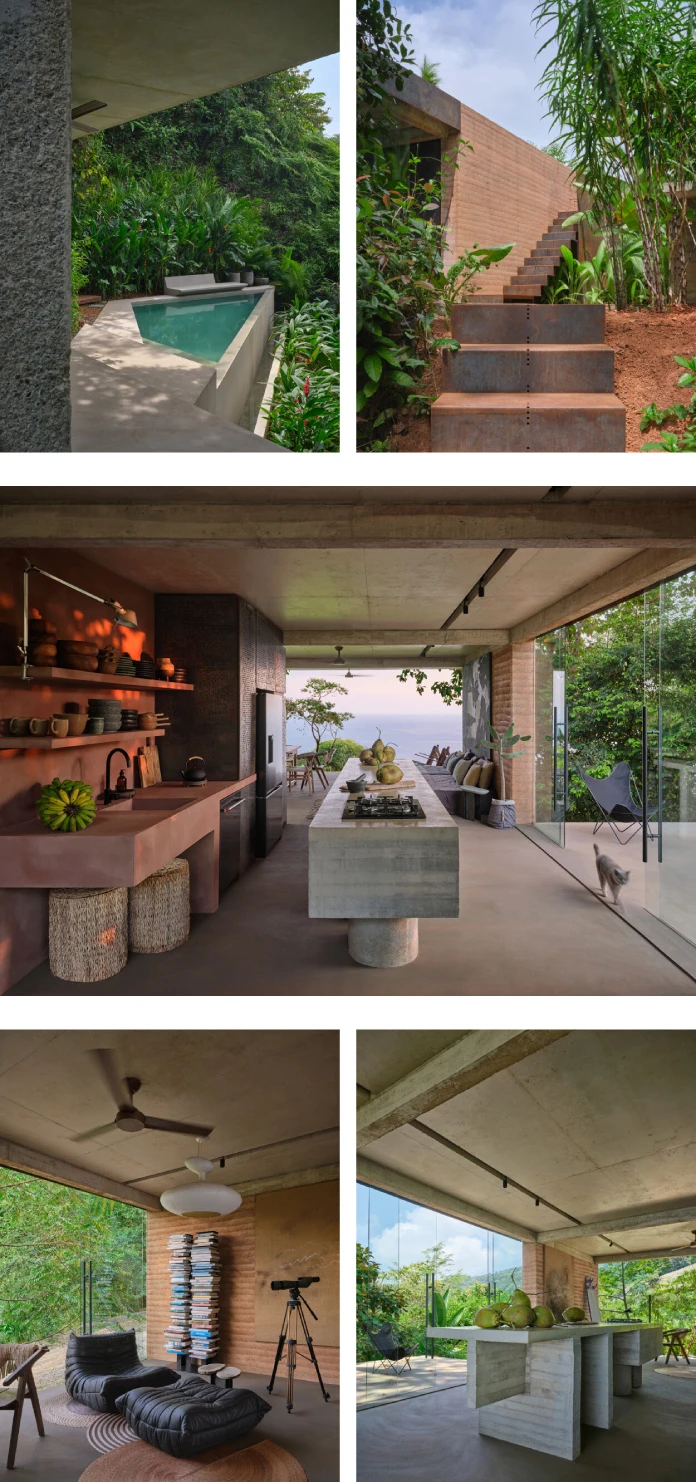
Open Yet Hidden
Located near Uvita, the house was designed as Dagmar’s permanent residence and a seasonal home for her partner, Karel Vančura. It stands beside Achioté, the pair’s earlier project of short-term rental villas, yet Studio House feels distinctly personal.
From the access road, the Costa Rican studio house appears as a modest volume. Its rammed earth walls, punctuated by expansive sliding glass panels, ground the home in simplicity. But beyond this minimalist front lies a spatial richness that reveals itself gradually.
Over half of the villa’s footprint is dedicated to terraces and the pool—spaces that blur domestic comfort with raw wilderness. The main living area, elevated and open to the ocean, doubles as a covered terrace. Concrete slabs lead to a floating platform that forms the entrance roof, while COR-TEN steel staircases connect the house vertically, guiding movement like a slow architectural rhythm.
The 10-meter infinity pool follows the natural slope, its geometry mirrored on the rooftop terrace above. Among the treetops, the upper terrace becomes an observatory where the horizon dissolves. It’s a place where architecture frames both the setting sun and the infinite night sky.
Despite its openness, the home maintains intimacy. The lower level—with bedrooms and a bathroom—remains tucked into the terrain, visible only from the garden’s private side. Pathways and stepping stones interweave through lush vegetation, giving the impression that the house was grown, not built.
Between Sky and Earth
Inside, the design philosophy continues. The upper living area is conceived as a single, uninterrupted space anchored by a four-meter concrete kitchen island. The choice of materials—concrete, steel, glass, and rammed earth—creates a tactile balance of strength and imperfection.
At night, a wall of laser-cut steel cabinetry transforms into a glowing constellation, scattering light across the space like a starlit canopy. Downstairs, bedroom doors emit a subtle luminescence, echoing moonlight and reinforcing the connection between architecture, celestial rhythm, and the human experience.
The lower level, shaped by the land’s contours, houses compact yet immersive rooms. The bedrooms open toward the pool and ocean, while the bathroom offers a rare experience—an ocean view directly from the shower. A corridor bathed in gold-red light during sunset reinforces the temporal beauty that defines the home.
Here, design becomes an act of awareness. Every wall, every shadow, and every reflection speaks of time, change, and belonging.
Wabi-Sabi and Material Honesty
The Costa Rican studio house embraces imperfection as part of its philosophy. The materials—earth, steel, concrete—are left raw, allowing them to age with grace. Their transformation is not hidden but celebrated, following the Japanese principle of wabi-sabi.
This approach creates a design language rooted in authenticity. Rather than polished luxury, the home exudes grounded elegance—a kind that emerges only when architecture respects the natural cycle of decay and renewal.
Inside, this authenticity extends to the art and furnishings. Works by Josef Achrer Jr. and Lukáš Musil, along with textile pieces from Geometr Studio, enhance the tactile and emotional quality of the space. Custom furniture designed by Štěpánová harmonizes with carefully chosen iconic pieces from around the world, resulting in an interior that feels curated yet deeply personal.
Architecture That Feels Alive
The brilliance of the Costa Rican studio house lies in its restraint. It doesn’t compete with nature—it listens to it. It’s not a monument, but a moment, stretched into livable form.
In an age where architectural spectacle often overshadows substance, Studio House reminds us that the most radical act might be simplicity. To design a space that heals, breathes, and connects is an achievement of rare maturity.
This house doesn’t seek to impress; it seeks to belong. And in that belonging, it achieves a kind of quiet perfection that feels increasingly rare in contemporary design.
Specifications
Architect: Dagmar Štěpánová, Formafatal
Location: Playa Hermosa, OSA, Uvita – Bahia Ballena, Puntarenas, Costa Rica
Photographer: BoysPlayNice
Closing Thoughts
The Costa Rican studio house stands as a benchmark for context-driven architecture in the tropics. It embodies the belief that the most powerful designs emerge not from dominance, but from dialogue.
For architects and designers searching for new models of sustainable, poetic living, Studio House offers both inspiration and a challenge:
Can architecture exist in harmony with nature—and still express individuality?
Dagmar Štěpánová’s answer is a resounding yes.
All images © Formafatal and BoysPlayNice. Don’t hesitate to browse WE AND THE COLOR’s Architecture category for more inspiring content.
Subscribe to our newsletter!

